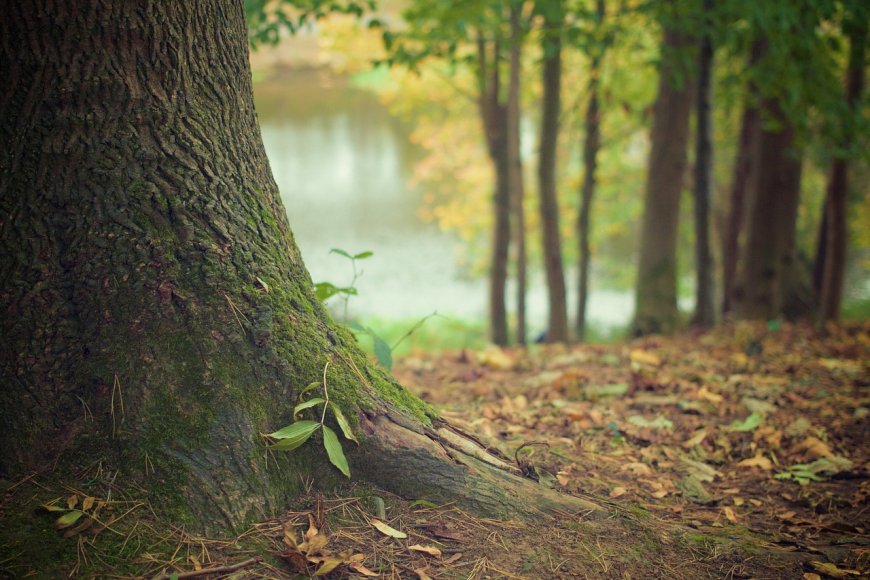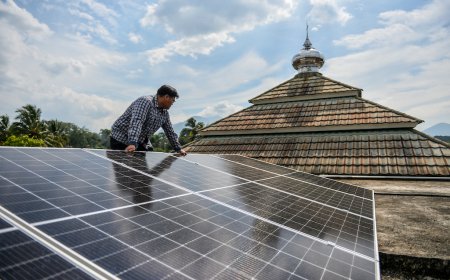Energy from Green Wood, Explanation of Photosynthesis in the Quran
The Quran reviews trees and herbs with various terms associated with them such as roots, stems, leaves and twigs.

Trees contribute many benefits to humans. One of the indisputable things is the ability of trees to produce oxygen when they photosynthesize. Unlike humans and animals, trees can produce substances that humans breathe in to breathe because they can use directly the sun's energy. Plants will convert solar energy into chemical energy, and store it in the form of nutrients in a special way. This process is called photosynthesis.
Photosynthesis is a biochemical process carried out by plants, algae, and some types of bacteria to produce spent energy (nutrients) by utilizing light energy. Almost all living things depend on the energy produced in photosynthesis. As a result, photosynthesis became very important for life on earth. Photosynthesis is also credited with producing most of the oxygen found in Earth's atmosphere. According to
BBC Science Focus, a single adult scycamore tree trunk, about 12 metres tall and weighing two tonnes including roots and leaves, when grown by 5 per cent each year, would produce 100 kilograms of wood and 38 kilograms of carbon. Taking into account the weight of wood and carbon, the tree is capable of producing 100 kilograms of oxygen per year. Meanwhile, humans need 740 kilograms per year to breathe. That is, roughly speaking, then we need seven or eight trees that contribute to the production of oxygen in one year.
Not only do they produce oxygen, trees can also absorb the carbon emissions that humans often produce. The emissions produced vary. The amount of carbon emissions that can be absorbed by a single tree can vary depending on the type of tree, age, environmental conditions, and other factors. Some trees, especially those that grow quickly and are large in size, can absorb more carbon. In addition, trees that are young or are in an environment that does not support optimal growth may absorb less carbon.
The function of the tree is not separated from the discussion in scripture. Many verses of the Quran describe trees with a variety of contexts. In the Thematic Quran Tafsir of Environmental Preservation published by Lajnah Pentashihan Mushaf Alquran Balitbang and Diklat Ministry of Religious Affairs, the Quran reviews about trees and herbs with various terms associated with them such as roots, stems, leaves and twigs. Not to be forgotten, the Quran also discusses grains, vegetables to fruits. Mention around the term trees is in 112 verses spread over 47 surahs. The Quran even records 16 types of plants that are clearly mentioned.
The story of the tree that produces oxygen is not explicitly described in the Quran. Nevertheless, the Quran briefly implies the process of photosynthesis as a producer of oxygen. In QS Yasin, Allah (swt) said: He who made fire for you from green wood, then immediately you set fire to it. (QS Yāsin verse 80).
In this verse, God explains that He is Almighty brings out the fire from the green tree that burns it. According to Muslim botanist Al-Miliji of Suez Canal University, Egypt, this verse does not describe the tree taken as firewood. When contemplated, this verse hints at two important events namely the process of energy formation from the elements in the leaves then stored in the form of a chemical arrangement known as anabolism, one of the phenomena of which is photosynthesis. The process was deduced from the fragment of the verse which read, “Alla h ja'ala lakum minasy-shajaril akh dh ari nāran”.
Next, the process of extracting energy from chemical elements in the form of caloric energy required by every living thing. This process known as catabolism is taken from the phrase, fa ′ i dza antum minhu tūqidūn. These two events are also called metabolism.
When interpreting the above verse, the scholars composing the Tafsir Al-Muntakhab explained that solar energy can pass into plants through the process of photosynthesis. Plant cells containing the green substance of the leaves (chlorophyll) suck carbon dioxide from the air. As a result, the interaction between carbon dioxide gases and water absorbed by plants from the soil will produce carbohydrate substances thanks to the help of sunlight. From it, wood is formed, which basically consists of chemical components containing carbon, hydrogen, and oxygen. This is how important plants are as producers of oxygen and other elements that are so needed by all living things on this earth.
Life on this planet earth began from the water in the oceans and oceans. While on the mainland, life, according to some experts, is based on the oldest plant fossils found, only began about 450 million years ago. It was then followed by other creatures, such as animals and humans whose lives are estimated to have begun around 200,000 years ago. Such a process of corruption is not without intent. The presence of 196 Existence of vegetation and plant trees long predates animals and humans because it has an enormous role in coating the earth's atmosphere with oxygen so that it is viable to live.13 Oxygen is a breathing material for all living things, including humans and animals. If there are no plants as producers of oxygen, the oxygen supply in the air will one day be exhausted and this will be the end of all living things on earth.







